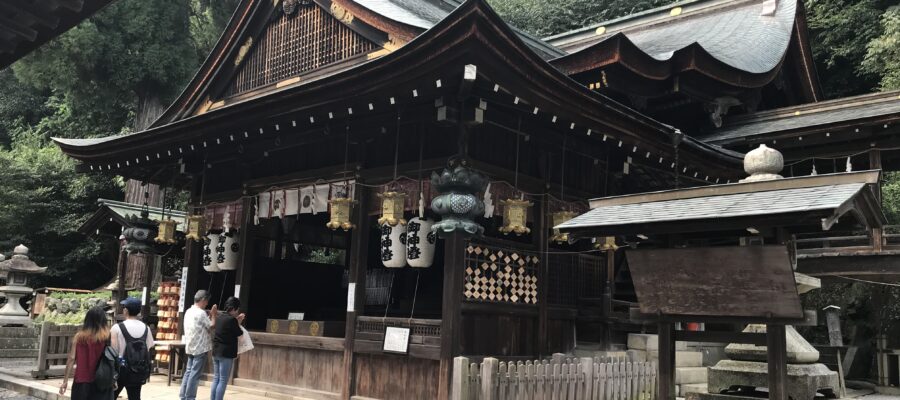八幡堀を見に近江八幡へ
ドラマや映画の撮影でよくつかわれる八幡堀を見に行こうと、妻とドライブで来た際、車を駐車した場所のそばにあったのが、この日牟禮八幡宮でした。この地に八幡様がお祀りされていたことが、近江八幡市の名前の由来になったとも言われています。
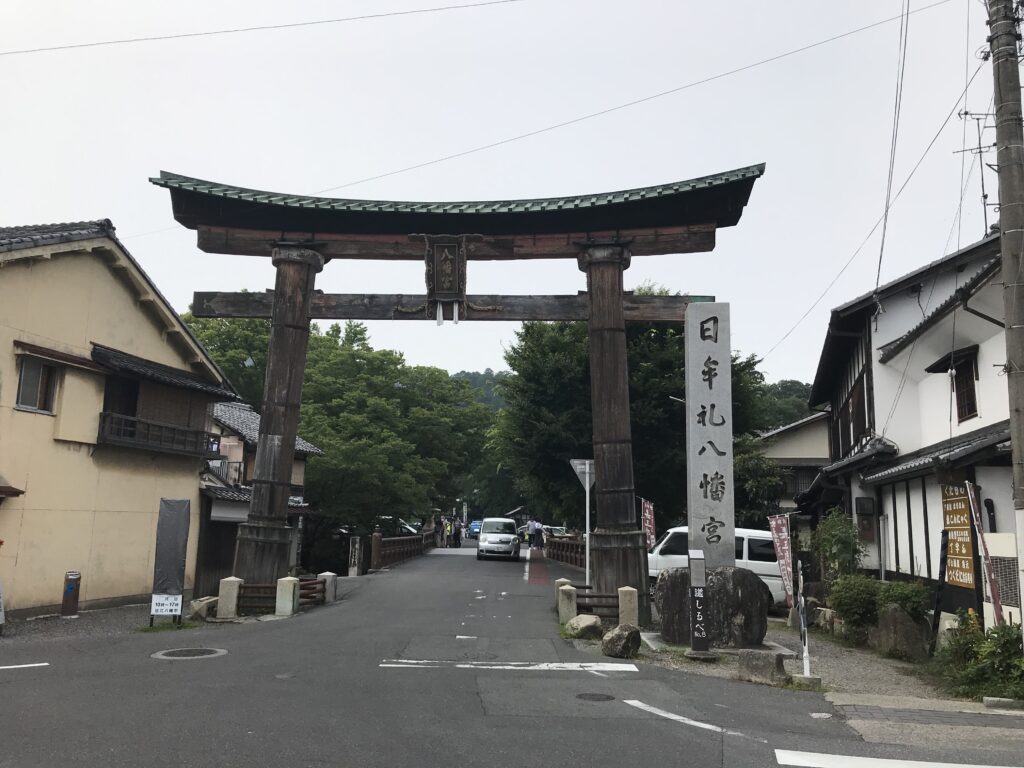
またまた左甚五郎
元々の楼門には左甚五郎の彫刻が彫られていたそうです。ここでも、登場しました左甚五郎。残念ながら江戸時代の末期に、この神社の有名な火祭りで焼失してしまったそうです。火を使う祭事が原因とは、時々聞く話ですが、残念な思いがします。東大寺の二月堂も、その有名な修二会(通称:お水取り)が原因で奈良時代の建物が焼失しています。
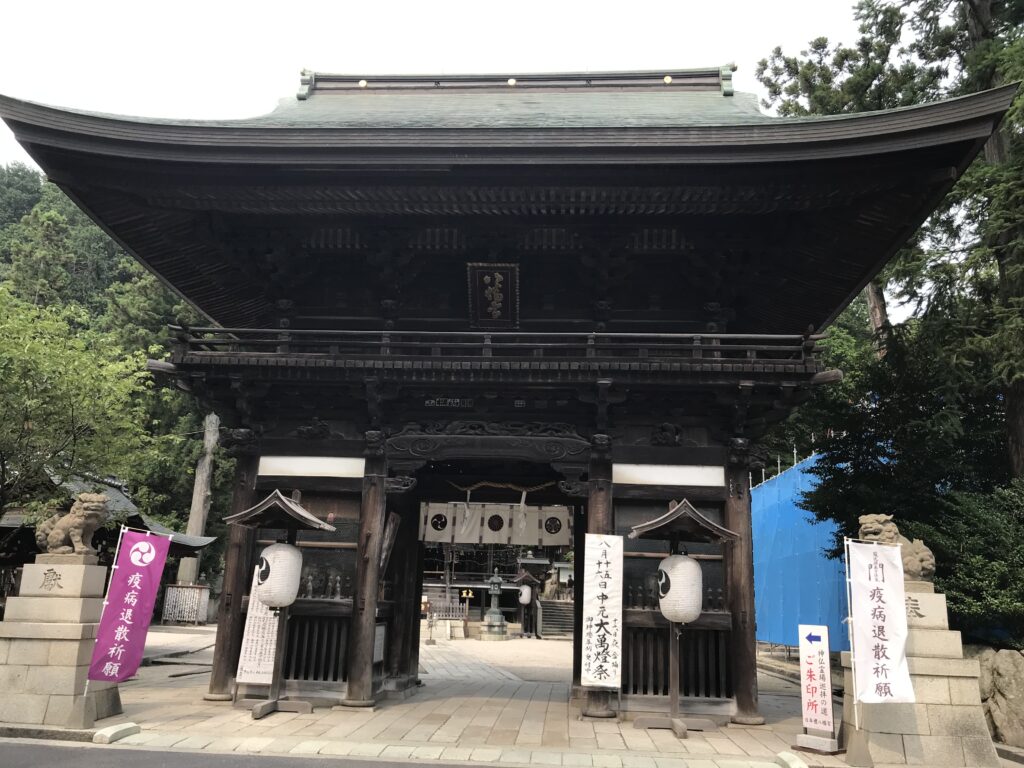
境内に入って拝殿まで進みます。この拝殿は源頼朝の命で、近江の守護職であった佐々木六角に命じて造営させました。人数は少ないですが、参拝に来られているのはご家族の方が多いです。近くの八幡堀や八幡山城に遊びに来られたついででしょうか。
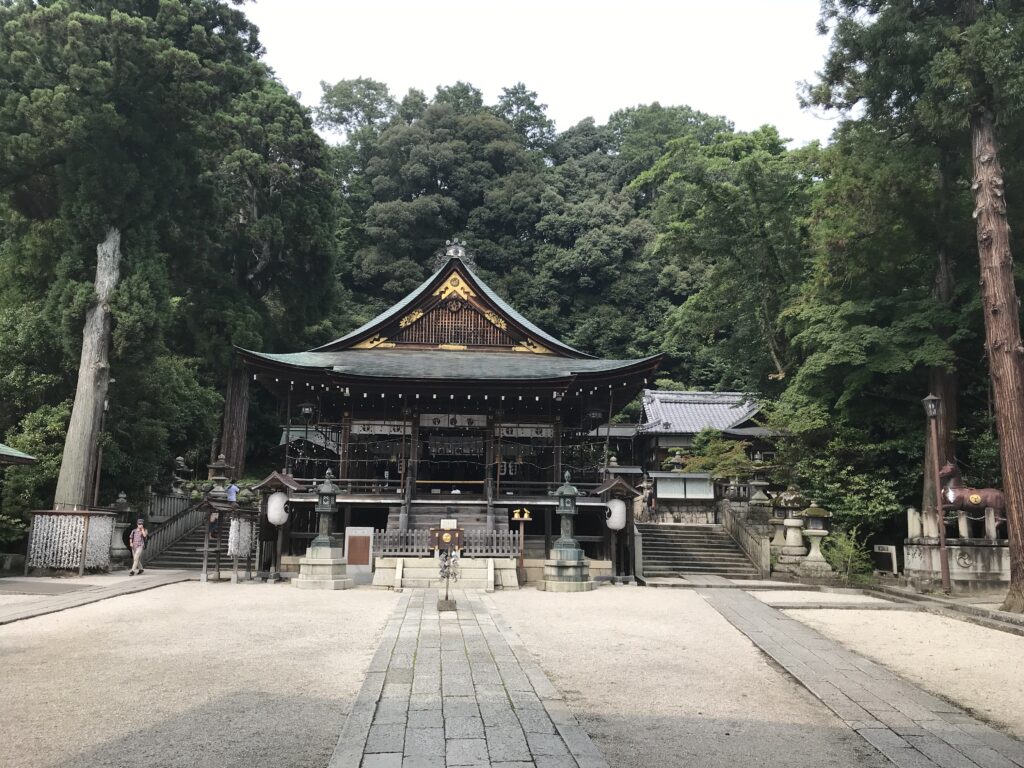
神社建築は種類が多く、知識の整理
拝殿の奥の本殿に来ますと、木造三間社流造千鳥破風向拝付という建築様式だそうです。これを英文で紹介するのは悩んでしまいます。海外の方をお連れした際、せいぜい参拝方法はお伝えできても、建築については、まだまだ私の知識ならびに説明力不足を感じてしまいます。
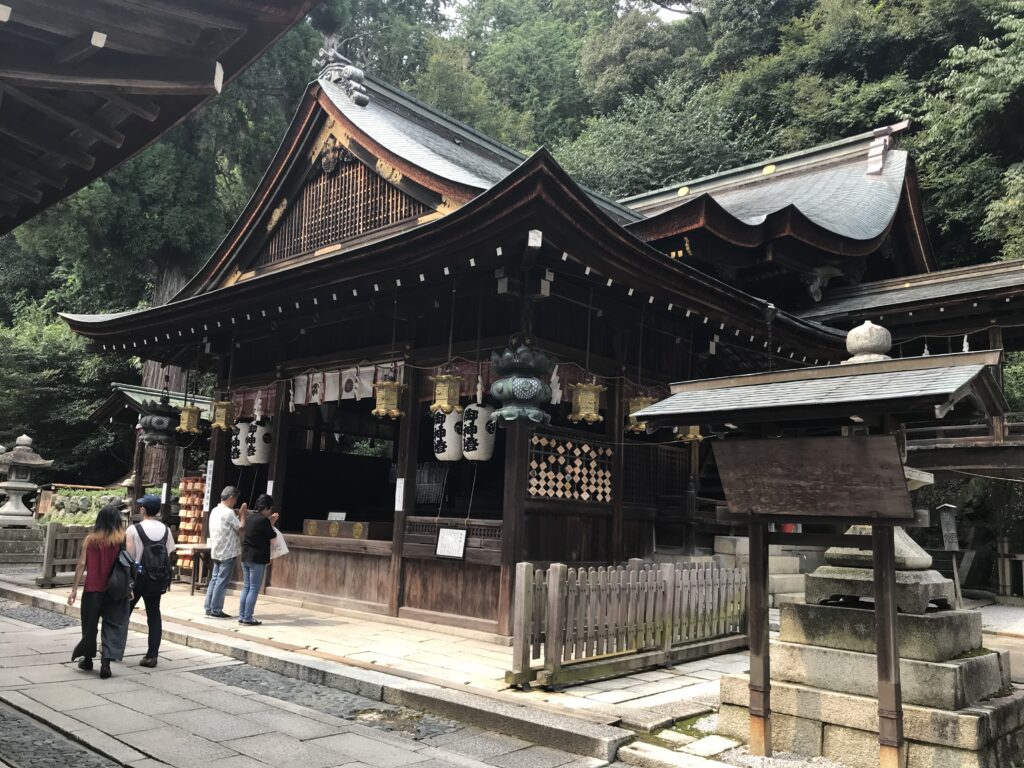
普段、あまり車を運転しないのですが、頑張って大阪から近江八幡までドライブしてきたので、帰りも無事に運転できますようにお祈りをしました。八幡山城に登る前に、心を休めることをできた参拝になりました。(完)
日牟禮八幡宮の御朱印
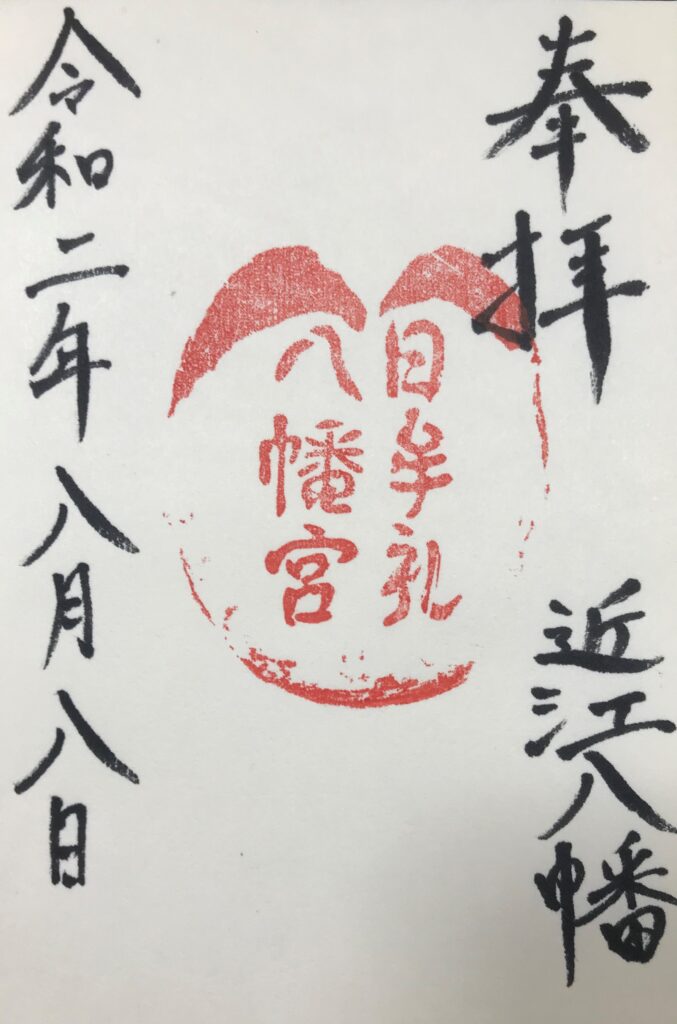
日牟禮八幡宮が紹介されている書籍
神仏霊場会の公式ガイドブックに日牟禮八幡宮が紹介されています。
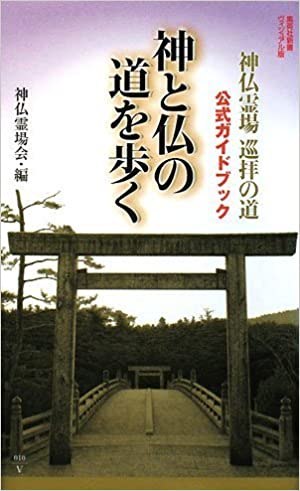
神と仏の道を歩く 神仏霊場巡拝の道公式ガイドブック (集英社新書ヴィジュアル版) [ 神仏霊場会 ]
価格:1,466円
(2021/5/6 09:24時点)
感想(5件)
Himure Hachimangu Shrine (English)
I went to Omi Hachiman City to see the Hachiman moat.
When my wife and I took a drive to see the Hachimanbori moat that is often used for filming dramas and movies, we found this Himure Hachiman Shrine near where we parked the car. It is said that the name of Omi Hachiman came from the fact that the Hachiman shrine was enshrined here.
I heard the name of sculptor, Hidari Jimogoro.
The original tower gate had a carving of Hidari Jingoro on it. Jingoro also made an appearance here. Unfortunately, his carving was burned down during the shrine’s famous fire festival at the end of the Edo period. It is a pity that we sometimes hear that the fire festival was the cause. The original Nigatsudo Hall of Todaiji Temple which was build more than 1000 years ago in Nara was also destroyed by fire due to its famous Shuni-e festival(a.k.a. Omizutori).
We entered the precincts and proceeded to the hall of worship. This hall of worship was ordered by Minamoto no Yoritomo to be built by Sasaki Rokkaku, the guardian of Omi (old name of Shiga prefecture). Although the number of visitors to the shrine was small, many of them were families. They might be visiting the nearby Hachimanbori moat or Hachimanyama Castle.
There are many types of shrine architecture, so I must organize my knowledge.
When I came to the main shrine at the back of the worship hall, I was told that it is a wooden San-Gen -Sya Nagare-Zukuri structure with Chidori-Hafu-Kohai. I would have a hard time introducing this in English. When I take people from overseas, I can at best tell them how to pray, but when it comes to architecture, I still feel my knowledge and explanation skills are insufficient.
I don’t usually drive much, but I prayed that I would be able to drive safely on the way back since I had worked so hard to drive from Osaka to Omi Hachiman. It was a good way to rest my mind before climbing Hachimanyama Castle. (End)
Sanctuaire Himure Hachimangu (Français)
Je suis allé à la ville de Omi Hachiman pour voir les douves d’Hachiman.
Lorsque ma femme et moi sommes allés voir les douves de Hachimanbori, souvent utilisées pour le tournage de drames et de films, nous avons trouvé ce sanctuaire d’Omi Hachiman près de l’endroit où nous avions garé la voiture. On dit que le nom d’Omi Hachiman vient du fait que le sanctuaire Hachiman était enchâssé ici.
J’ai entendu le nom du sculpteur, Hidari Jimogoro.
La porte originale de la tour avait une sculpture de Hidari Jingoro. Jingoro a également fait une apparition ici. Malheureusement, sa sculpture a été brûlée lors du célèbre festival du feu du sanctuaire à la fin de la période Edo. Il est dommage que nous entendions parfois dire que le festival du feu en était la cause. La salle originale Nigatsudo du temple Todaiji, construite il y a plus de 1000 ans à Nara, a également été détruite par le feu lors du célèbre festival Shuni-e (alias Omizutori).
Nous sommes entrés dans l’enceinte et nous nous sommes dirigés vers la salle de culte. Cette salle de culte a été commandée par Minamoto no Yoritomo pour être construite par Sasaki Rokkaku, le gardien d’Omi (ancien nom de la préfecture de Shiga). Bien que le nombre de visiteurs du sanctuaire soit faible, beaucoup d’entre eux étaient des familles. Elles visitaient peut-être les douves de Hachimanbori ou le château de Hachimanyama.
Il existe de nombreux types d’architecture de sanctuaire, je dois donc organiser mes connaissances.
Lorsque je suis arrivé au sanctuaire principal, au fond de la salle de culte, on m’a dit qu’il s’agissait d’une structure en bois San-Gen -Sya Nagare-Zukuri avec Chidori-Hafu-Kohai. J’aurais du mal à présenter cela en anglais. Lorsque j’emmène des gens de l’étranger, je peux au mieux leur dire comment prier, mais lorsqu’il s’agit d’architecture, j’ai toujours l’impression que mes connaissances et mes capacités d’explication sont insuffisantes.
D’habitude, je ne conduis pas beaucoup, mais j’ai prié pour pouvoir conduire en toute sécurité sur le chemin du retour, car j’avais travaillé si dur pour conduire d’Osaka à Omi Hachiman. C’était une bonne façon de me reposer l’esprit avant de monter au château Hachimanyama. (Fin)
